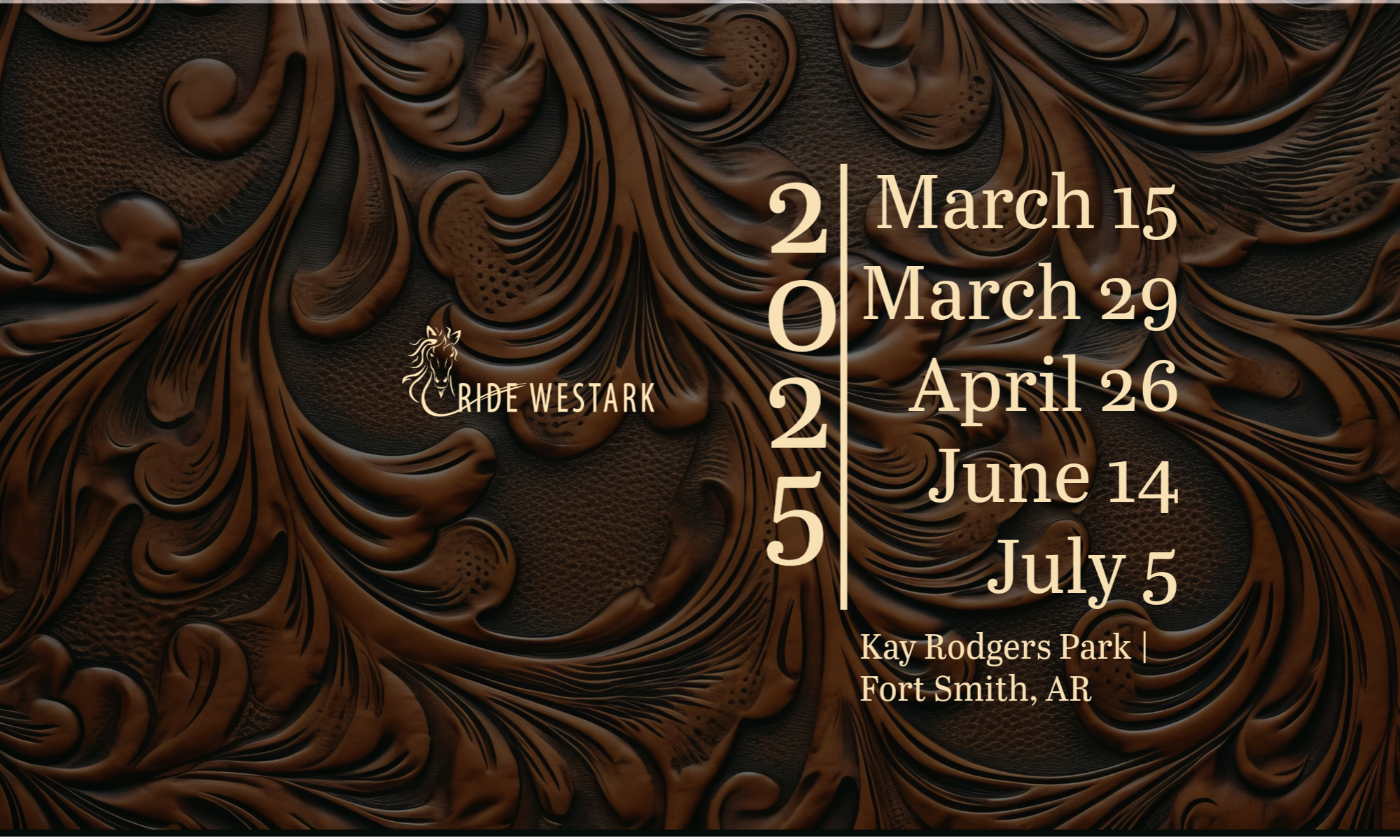Reining
Reining is a judged event designed to show the athletic ability of a ranch type horse in the confines of a show arena. In reining competition, contestants are required to run one of several approved patterns. Each pattern includes small slow circles, large fast circles, flying lead changes, rollbacks over the hocks, a series of 360 degree spins done in place, and the exciting sliding stops that are the hallmark of the reining horse. To rein a horse is not only to guide him, but also to control his every movement. The best reined horse should be willingly guided or controlled with little or no apparent resistance and dictated to completely. Any movement on his own must be considered a lack of control.
Any one of the 13 AQHA-approved reining patterns may be used and is to be selected by the judge of the class and used by all contestants in the class. Each contestant will perform the required pattern individually and separately. All horses will be judged immediately upon entering the arena. Any fault incurred prior to the commencement of a pattern will be scored accordingly. All deviations from the exact written pattern must be considered a lack of or temporary loss of control, and therefore faulted according to severity of deviation. Credit will be given for smoothness, finesse, attitude, quickness and authority in performing the various maneuvers while using controlled speed.
Excess rein may be straightened at any place a horse is allowed to be completely stopped during a pattern; rider’s free hand may be used to hold romal in the normal fashion.
Scoring will be on the basis of 0-Infinity, with 70 denoting an average performance. Points will be added or subtracted from the maneuvers on the following bases, ranging from plus 1 1/2 to minus 1 1/2: -1 1/2 extremely poor, -1 very poor, -1/2 poor, 0 average, +1/2 good, +1 very good, +1 1/2 excellent. Maneuver scores are to be determined independently of penalty points.
Faults against the horse to be scored accordingly, but not to cause disqualification:
Opening mouth excessively when wearing bit;
Excessive jawing, opening mouth or head raising on stop;
Lack of smooth, straight stop on haunches-bouncing or sideways stop;
Refusing to change leads;
Anticipating signals;
Stumbling;
Backing sideways;
Knocking over markers
Faults against the rider to be scored accordingly, but not to cause disqualification:
Losing stirrup;
Failure to run circles or figure eights within the markers is not considered a fault depending on arena conditions and size; however, failure to go beyond markers on rollbacks and stops is considered a fault.
No score:
Abuse of an animal in the show arena and/or evidence that an act of abuse has occurred prior to or during the exhibition of a horse in competition;
Use of illegal equipment, including wire on bits, bosals or curb chains;
Use of illegal bits, bosals or curb chains; when using a snaffle bit, optional curb strap is acceptable; however, curb chains are not acceptable.
Use of tack collars, tie downs, nose bands, whips, bats; attachments which alter the movement of or circulation to the tail;
Failure to provide horse and equipment to the appropriate judge for inspection;
Disrespect or misconduct by the exhibitor;
Score of 0:
Use of more than index or first finger between reins; use of two hands (except when showing a horse 5yr or younger in a snaffle or bosal) or changing hands; incorrect use of romal reins
Failure to complete pattern as written; Performing the maneuvers other than in specified order;
The inclusion of maneuvers not specified, including, but not limited to: Backing more than two strides or turning more than 90 degrees
Equipment failure that delays completion of pattern; including dropping a rein that contacts the ground while horse is in motion.
Balking or refusal of command where performance is delayed;
Running away or failing to guide where it becomes impossible to discern whether the entry is on pattern;
Jogging in excess of one-half circle or one-half the length of the arena;
Overspins of more than 1/4 turn ( 90 degrees)
Fall to the ground by horse or rider
Five point penalty: per incident?
Spurring in front of cinch;
Use of either hand to instill fear or praise;
Holding saddle with either hand;
Blatant disobediences including kicking, biting, bucking, rearing and striking.
Two point penalty, per incident
Break of gait;
Freeze up in spins or rollbacks;
On walk-in patterns, failure to stop or walk before executing a canter departure.
On run-in patterns, failure to be in a canter prior to the first marker.
If a horse does not completely pass the specified marker before initiating a stop position.
Jogging out of a rollback beyond two strides, but less than 1/2 circle or 1/2 the length of the arena
In patterns requiring a run-around, failure to be on the correct lead when rounding the end of the arena formore than half the turn
One point penalty, per incident
Each time a horse is out of lead, a judge is required to deduct one point. The penalty for being out of lead iscumulative and the judge will deduct one penalty point for each quarter of the circumference of a circle or any part thereof that a horse is out of lead.
Over or under spinning 1/8 to 1/4 turn.
In patterns requiring a run-around, failure to be on the correct lead when rounding the end of the arena forhalf the turn or less
1/2 point penalty, per incident
A judge is required to penalize a horse 1/2 point for a delayed change of lead by one stride where the lead change is required by the pattern description.
Starting circle at a jog or exiting rollbacks at a jog up to two strides.
Over or under spinning up to 1/8 of a turn;
Failure to remain a minimum of 20 feet (6 meters) from the wall or fence when approaching a stop and/or rollback.
